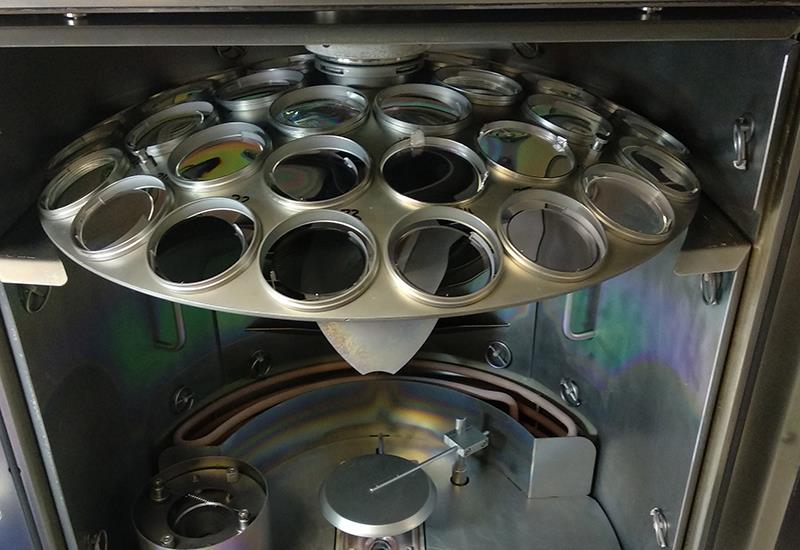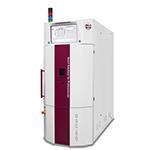Located in the town of Totton, lying just west of Southampton over the River Test, Waterside Labs is a fairly unassuming building, but one that contains advanced technology capable of creating highly specialised lenses.
In 2014, joint managing directors Chris Smith and Bob Forgan took over from founder and father Ray Smith. Since then, the duo have instigated a ‘culture change’ at the lab and have taken the business in a new and exciting direction.
‘We would have liked to do it before,’ says Forgan. ‘We knew what we had to do.’
The pair’s philosophy is that trying to compete with large, multinational labs on price is futile. Instead, a focus on specialisation allows them to stand out by offering technically sophisticated premium and consistently manufactured products.
Forgan says: ‘Rather like high street practices who have had to differentiate themselves and not just compete at the bottom end, we’ve become a more niche business.
‘Our volumes today compared to six years ago are probably a third less. But, our average value has increased 50%. Before we were making bread and butter orders. Now, we’ve become more premium and have developed our own brands.’
This new direction all stems from the decision made by Ray Smith back in the 1980s to only supply independents. Consequently, the company needed to have an attractive offer for its customers, and one which would not see it embroiled in direct competition with multiples.
‘Once you say no to the large multiple you only have one avenue to go down,’ says Chris Smith. ‘I think [Ray] preferred a broader base. A broad customer base. You’re not so dependent that way.’
The first thing the two did upon taking over was to upgrade, integrate and streamline the lab’s computer systems. Chris is the labs ‘resident IT expert’ and digitised the lab, meaning a smoother and more accurate production process. ‘Before, everything was handwritten and was quite archaic really,’ he adds.
Next, they invested in several new pieces of equipment that have allowed them to offer far more specialised lens products to their clients and, in doing so, differentiate themselves from the competition.
‘At the end of 2017, we created a coating facility, which meant we had to put in a spin coater for hard coating, a laminate flow cabinet and also the Optotech coating machine. And that allowed us to do more AR and hard-coating abilities,’ explains Forgan.
He continues: ‘In 2018, we then invested in the Optotech flash plus which is the new generator, the Optotech auto polisher and auto engraver, which is primarily for varifocal marking but it also means we can now do logo engraving.
‘Our most recent investment, last week, was the cryochiller, which means the coating process is rapidly sped up. It knocks an hour off the time – it only takes 30 minutes now.’
Investing in a range of Optotech equipment means the machinery is compatible and communicates far more effectively, facilitating a more efficient production line. The Telemark cryochiller has been particularly effective: ‘It has a big impact on how the production line functions, but the main thing is that we have consistency of the coating as it really reduced the amount of moisture in the chamber, which is the biggest enemy,’ says Smith.
The new technology has added value and independence to the business. ‘We’re more self-sufficient now,’ says Forgan, ‘there’s really nothing now that we can’t do in house.’
Some of Waterside’s latest product developments include UltraThin lenses, which ‘delivers true benefits for both practitioners (via additional dispensing opportunities) and wearers,’ says Forgan. ‘There have been numerous instances already where Waterside has been able to manufacture and glaze single vision and progressive lenses, when other much bigger companies could not.’
The new lenses ‘incorporate manufacturing software and techniques that allow six and eight base sports lenses to be produced in Rx powers not previously possible and this has only been achievable due to Waterside recognising the need and investing in the equipment and software that allows the special manufacturing techniques necessary’.

Inside the OAC 60 coating applicator system
Other notable products are its VFX honeycomb lenses. ‘Honeycomb lenses have been available in the UK for some while but the recent investment in equipment and technology at Waterside means we are one of the few UK companies that can actually manufacture them in-house,’ says Forgan. ‘Utilising honeycomb filter technology, which works in a similar way to pinhole glasses, our unique VFX lens treatment reduces the effects of light pollution and scattered light rays to provide cleaner and crisper images – resulting in enhanced vision, reduced glare and improved visual comfort.’
In addition, Waterside’s VFX inMotion is a personalised progressive lens that ‘incorporates a power distribution specifically adapted for driving. It includes honeycomb filter technology and a night vision zone for greater visual quality and less fatigue when driving at night,’ Forgan explains.
‘VFX inMotion has a specific night vision zone that helps compensate the refractive error difference that occurs between day and night by up to 0.25 D. This provides the wearer with superior visual acuity, reducing stress and visual fatigue so common when driving at night,’ he adds.

These products have helped Waterside stand out in a market Forgan describes as increasingly ‘horrible’. He says, ‘It so cut-throat. It’s an overcrowded marketplace. There are too many labs chasing too little business. We’ve seen a number go to the wall over the years, but we believe that by sticking to our strategy we will survive… and thrive.’
In short, that strategy is: specialise in something that nobody else can do. This will differentiate you from larger companies who will beat you on price but not necessarily service and specialist products.
However, in order to achieve said specialisation you need the support and expertise to back it up. Out of the 25 staff Waterside employ, 17 have been there for more than 10 years. And, of the other eight, only three joined without having previous optical experience.
‘You can’t overstate what they offer to the business,’ says Smith. Their skill and expertise enable great customer and client service through their ability to know which lenses best suit a patient’s requirement, Smith argues. ‘News of this quality of service then spreads between people by word of mouth,’ he adds.
For Forgan, the development of the industry as a whole, although not without its challenges, presents the opportunity for experience to stand out. ‘Forty-five years ago, optics was a profession. In the 1980s it became a business. It is now very much a commercial business and consequently a lot of people working in the retail environment don’t have that much knowledge. They might not have the knowledge themselves, so they call upon us.’
